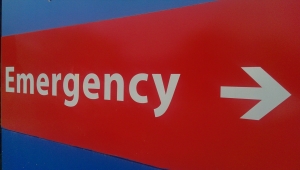
Now, however, the basic emergency communication provided by 911 systems and operators has been expanded and enhanced with apps and software. Technology has improved response time and efficiency. Gathering detailed information that is critical in an emergency has become a cornerstone of quality. Every minute counts when emergencies are critical in nature and the more information that responders have, the greater the quality of their care.
The latest trend is Smart911 technology. A growing number of public safety agencies are using this technology to add another layer of protection for citizens. It allows individuals, before there is an emergency, to build a safety profile online. Citizens are encouraged to provide pertinent information in that profile about themselves, family members, property and even pets. Often, this personal information is exactly what first responders need when, sometime in the future, there is an actual emergency. If an individual has taken the time to provide information in a safety profile, it is stored on secure servers and will be available on a 911 operator’s screen when the profile holder calls 911.
 Safety profiles provide dispatchers with critical data that eliminates the myriad of questions that otherwise would need to be asked at a time when a caller is under great stress and in need of immediate assistance.
Safety profiles provide dispatchers with critical data that eliminates the myriad of questions that otherwise would need to be asked at a time when a caller is under great stress and in need of immediate assistance.
First responders who arrive at a fire need information such as how many people live in the home and whether any are disabled or impaired. If information about the locations of electrical and gas cutoffs has been provided, it is abundantly helpful.
Smart911 debuted in Texas in 2011 in three Dallas-area cities – Cedar Hill, Duncanville and DeSoto. Since then, additional Smart911 technology has been installed in numerous municipalities throughout the state. The technology is operational in cities such as Cedar Park, Lakewood, Rockwall, Georgetown, Rowlett and Leander. Among the latest cities to take advantage of Smart911 is Round Rock in Central Texas.
When Texas cities began to install Smart911 software, the system was available in about 40 municipalities in just nine states. Today, 40 states and more than 1,500 cities have installed Smart911 technology.
Information regarding family members’ medical conditions is extremely helpful to EMS staff and firefighters in the event of sudden illness or in rescue situations. Knowing about drug allergies and what medications a victim is taking will help medical staff to be much more efficient. That information will also ensure that no medications are administered that could cause harm.
The job of firefighters is made much easier when 911 dispatchers have a photo of the property to which they are responding. A blueprint or layout of the house can be used to locate bedrooms and exit routes. Details about any property are important.
Mobile phones users can also create a safety profile and the information will be available when 911 calls come from mobile devices.
Public safety agents understand the benefits of an investment in Smart911. They know how much the critical information benefits the health and safety of their cities and their citizens. The return on investment (ROI) is extremely high because it saves time, property, money – and lives.
